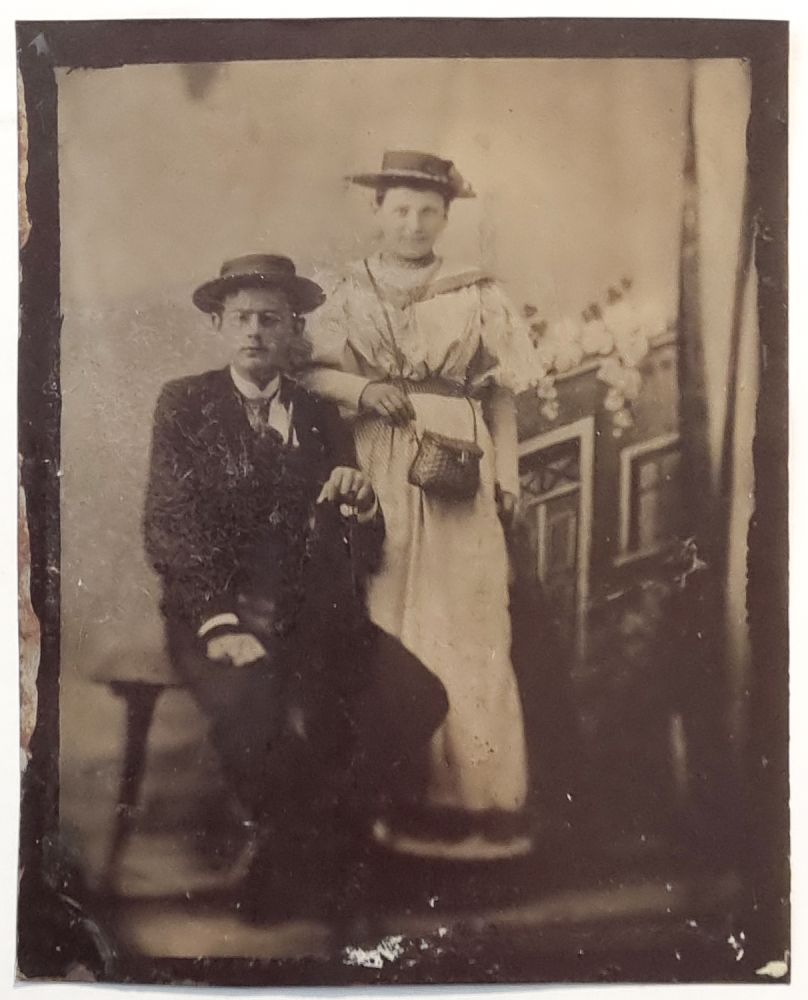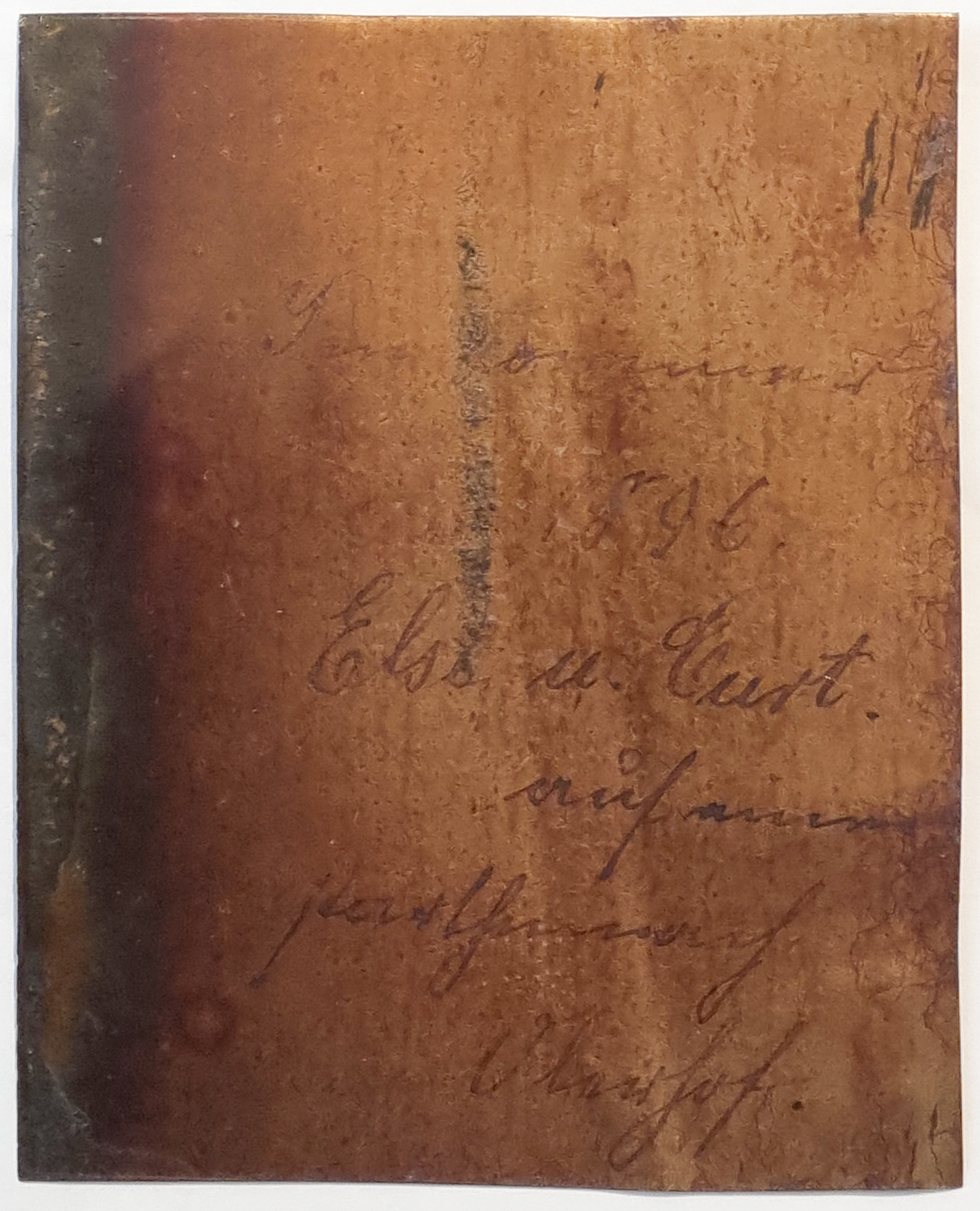"Else und Kurt"
Tintype on metal plate
labeled on verso
This small photograph on sheet metal is a tintype. Ferrotype, also known as tintype or tinplate photography, is a photographic direct positive process that was used between 1855 and the 1930s. It is based on a collodion layer containing iodine and bromide silver, known as collodion process. A black lacquered sheet of iron was used as a support for the collodion emulsion, which served as a background for the unique negative. The photochemical negative appears as a positive against the dark background due to the dark-field principle. The process was very inexpensive and quickly became popular as a replacement for the daguerreotype. Since insensitive metal plates were used as a support instead of the usual glass plates, the finished ferrotype was also very robust and could be easily shipped or even made into brooches. Street and fairground photographers in particular liked this process. In contrast to expensive studio photography, the new technique was also affordable for the working class and represented an alternative to the carte-de-visite, which was very popular at the time. It was one of the first processes in which the finished photo could be taken by the customer after just a few minutes of waiting. The Bosco vending machine was invented in 1890. This first photo booth produced ferrotypes independently.
(Christoph Fuchs)

